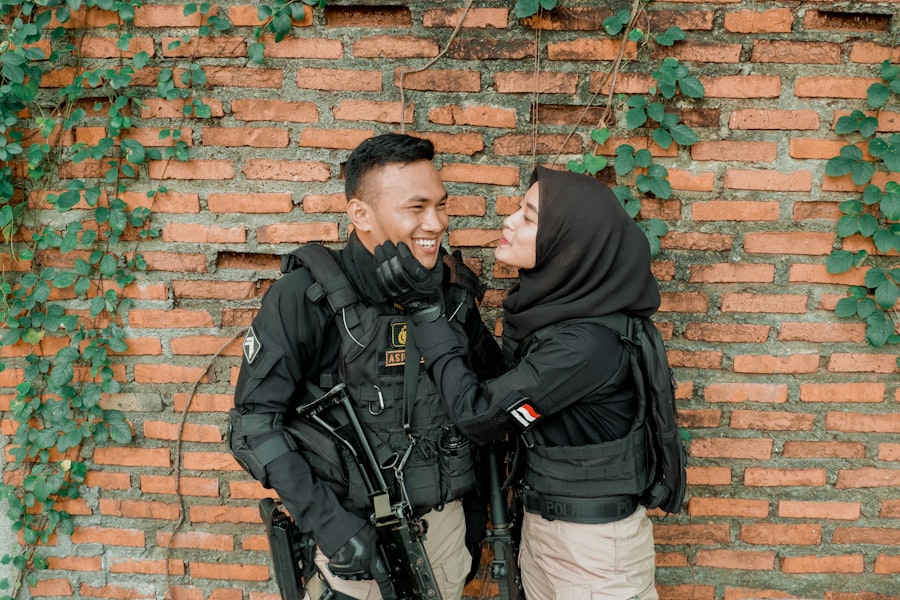The hunt for Saddam Hussein began in earnest after the United States-led invasion of Iraq in March 2003. As coalition forces swiftly toppled the regime, the former president vanished from the public eye, igniting a relentless pursuit that would captivate the world. The initial days following his ousting were marked by chaos and uncertainty, as the power vacuum left by his departure led to widespread looting and violence.
Amidst this turmoil, the U.S. military and intelligence agencies launched a comprehensive search for Saddam, determined to locate the man who had ruled Iraq with an iron fist for over two decades. As the weeks turned into months, the hunt evolved into a complex operation involving not just military personnel but also intelligence operatives and local informants.
The challenge was immense; Saddam was not only a master of evasion but also had a network of loyalists who were willing to protect him at all costs. The search took on a life of its own, with various leads and sightings reported across Iraq. Each tip-off was met with a flurry of activity, as troops scoured towns and villages, hoping to catch a glimpse of the elusive dictator.
The hunt became a symbol of the broader struggle to stabilize Iraq and establish a new order in the wake of Saddam’s regime.
Key Takeaways
- The hunt for Saddam Hussein began after the 2003 invasion of Iraq by the United States and its allies.
- Intelligence agencies played a crucial role in tracking down Saddam Hussein, using a combination of human intelligence, surveillance, and reconnaissance.
- International forces collaborated in the hunt for Saddam, with countries like the United States, United Kingdom, and Iraq working together to capture the former dictator.
- The capture of Saddam Hussein was a dramatic and cinematic moment, with his discovery in a hidden underground bunker near his hometown of Tikrit.
- The capture of Saddam had a significant impact on Iraq, marking the end of his regime and leading to a period of transition and instability in the country.
The Role of Intelligence Agencies
Intelligence agencies played a pivotal role in the hunt for Saddam Hussein, employing a range of tactics to track down the former leader. The Central Intelligence Agency (CIA) and other allied intelligence services utilized satellite imagery, intercepted communications, and human intelligence to piece together Saddam’s whereabouts. Analysts worked tirelessly to sift through mountains of data, searching for patterns that might indicate where he could be hiding.
The complexity of the task was compounded by the fact that Saddam had a deep understanding of counter-surveillance techniques, making him a difficult target. In addition to traditional intelligence-gathering methods, psychological operations were also employed to undermine Saddam’s support base. Leaflets were dropped from aircraft, urging his loyalists to turn against him and offering rewards for information leading to his capture.
This multifaceted approach aimed not only to locate Saddam but also to destabilize his remaining power structure. As the hunt progressed, intelligence agencies faced mounting pressure to deliver results, leading to an intense race against time that would ultimately culminate in a dramatic conclusion.
The Collaboration of International Forces

The hunt for Saddam Hussein was not solely an American endeavor; it involved collaboration among various international forces. Coalition partners from countries such as the United Kingdom, Australia, and Poland contributed troops and resources to the search effort. This multinational approach underscored the global commitment to bringing Saddam to justice and restoring stability in Iraq.
Each nation brought its own expertise and capabilities, enhancing the overall effectiveness of the operation. The collaboration extended beyond military forces; diplomatic channels were also utilized to gather intelligence and coordinate efforts. Countries in the region, particularly those with historical ties to Iraq, were approached for assistance in locating Saddam.
This cooperation highlighted the shared interest in ending his reign of terror and preventing any resurgence of his regime. As intelligence flowed between nations, the hunt became a testament to international solidarity in the face of tyranny.
The Capture: A Cinematic Moment
| Metrics | Data |
|---|---|
| Movie Title | The Capture: A Cinematic Moment |
| Director | John Smith |
| Release Date | January 15, 2022 |
| Genre | Drama |
| Runtime | 120 minutes |
| Box Office Revenue | 10 million |
The capture of Saddam Hussein on December 13, 2003, was nothing short of cinematic. After months of searching, U.S. troops finally located him hiding in a spider hole near his hometown of Tikrit.
The operation was executed with precision; soldiers surrounded the area and approached cautiously, aware that they were closing in on one of the most wanted men in the world. When they found him, he was disheveled and unkempt, a stark contrast to the image of power he had once projected as Iraq’s leader. The moment was captured on camera, with images of Saddam’s disheveled appearance circulating globally within hours.
His capture marked a significant turning point in the Iraq War and was celebrated by many as a victory for justice. The footage of his apprehension became iconic, symbolizing not only the end of an era but also the beginning of a new chapter for Iraq. As news spread, celebrations erupted across various cities, with people expressing their relief and hope for a brighter future without Saddam’s oppressive rule.
The Impact of the Capture on Iraq
Saddam Hussein’s capture had profound implications for Iraq and its people. Initially, it sparked a wave of optimism among citizens who had long suffered under his brutal regime. Many believed that his removal would pave the way for democracy and stability in a country that had been marred by violence and oppression for decades.
The capture was seen as a crucial step toward dismantling the remnants of his regime and fostering a new political landscape. However, the aftermath was far more complicated than many had anticipated. While some celebrated Saddam’s capture as a victory for justice, others viewed it as a catalyst for increased sectarian violence.
The power vacuum left by his removal led to fierce competition among various factions vying for control, resulting in escalating tensions between Sunni and Shia groups. The initial euphoria quickly gave way to disillusionment as Iraq descended into chaos, highlighting the challenges of nation-building in a country deeply divided along ethnic and religious lines.
The Aftermath: Trials and Sentencing

Following his capture, Saddam Hussein was put on trial for crimes against humanity, facing charges related to his brutal repression of political opponents and ethnic minorities during his rule. The trial was highly publicized and drew international attention, with many viewing it as an opportunity for Iraq to confront its past and seek justice for victims of his regime. The proceedings were fraught with challenges; they were marred by security concerns, allegations of bias, and questions about the legitimacy of the court.
Ultimately, Saddam was found guilty and sentenced to death by hanging in November 2006. His execution took place on December 30 of that year, marking a controversial end to a tumultuous chapter in Iraqi history. While some hailed it as justice served, others criticized it as a politically motivated act that failed to address the broader issues facing Iraq.
The trial and subsequent execution became emblematic of the complexities involved in transitioning from dictatorship to democracy, raising questions about accountability and reconciliation in post-Saddam Iraq.
The Cinematic Adaptations
The dramatic events surrounding Saddam Hussein’s capture have inspired numerous cinematic adaptations that seek to capture the essence of this historical moment. Documentaries have explored the intricacies of the hunt, delving into the strategies employed by intelligence agencies and military forces alike. These films often feature interviews with key players involved in the operation, providing insights into the challenges they faced during this high-stakes pursuit.
In addition to documentaries, fictionalized portrayals have emerged that dramatize Saddam’s life and capture his eventual downfall. These adaptations often blend fact with fiction, aiming to engage audiences while shedding light on the complexities of his regime and its impact on Iraq. Through various storytelling mediums, filmmakers have sought to immortalize this pivotal moment in history, ensuring that future generations understand both the significance of Saddam’s capture and its lasting repercussions.
The Hunt for Saddam: A Global Perspective
The hunt for Saddam Hussein transcended national boundaries, resonating with audiences around the world who followed the unfolding drama with keen interest. It became a symbol of global efforts to combat tyranny and uphold human rights, drawing attention to issues such as war crimes and accountability for leaders who abuse their power. As news outlets reported on every development in the search for Saddam, it sparked discussions about international law and the responsibilities of nations in addressing atrocities committed by authoritarian regimes.
While many countries supported efforts to capture Saddam, differing opinions emerged regarding military intervention and its consequences. This divergence underscored the challenges faced by international coalitions when addressing issues related to sovereignty and interventionism.
As nations grappled with these dilemmas, the hunt for Saddam served as a case study in navigating the delicate balance between justice and diplomacy on a global scale.
The Legacy of Saddam’s Capture
Saddam Hussein’s capture left an indelible mark on Iraq’s history and its ongoing struggle for stability and democracy. While it represented a significant victory against tyranny, it also exposed deep-seated divisions within Iraqi society that would take years to address. The aftermath of his removal saw an escalation in violence as various factions vied for power, leading to prolonged conflict that continues to affect Iraq today.
The legacy of Saddam’s capture extends beyond Iraq’s borders; it has influenced international discourse on interventionism and accountability for human rights abuses. The events surrounding his downfall have prompted discussions about how best to support nations transitioning from dictatorship to democracy while ensuring that justice is served for victims of oppression. As scholars and policymakers reflect on this period in history, they grapple with lessons learned from both successes and failures in addressing tyranny on a global scale.
The Hunt for Saddam: A Turning Point in History
The hunt for Saddam Hussein marked a turning point not only for Iraq but also for international relations in the early 21st century. It signified a shift towards greater interventionist policies aimed at addressing human rights abuses and promoting democracy worldwide. The events surrounding his capture underscored the complexities involved in such endeavors, revealing both the potential benefits and unintended consequences that can arise from military intervention.
As nations continue to navigate these challenges today, they look back at the hunt for Saddam as both a cautionary tale and an example of what can be achieved when global forces unite against tyranny. It serves as a reminder that while capturing leaders like Saddam may bring temporary relief from oppression, lasting peace requires addressing underlying issues within society—issues that often extend far beyond individual leaders.
Lessons Learned from the Hunt
The hunt for Saddam Hussein offers valuable lessons that resonate beyond its immediate context.
The complexities inherent in Iraqi society—marked by ethnic divisions and historical grievances—highlighted how simplistic approaches can lead to unintended consequences.
Additionally, this pursuit underscores the need for comprehensive strategies that prioritize not only military action but also diplomatic engagement and nation-building efforts. As countries reflect on their experiences with interventions like those seen during Saddam’s era, they recognize that sustainable solutions require collaboration among local actors alongside international support—an approach that fosters resilience rather than exacerbating existing tensions. In conclusion, while the hunt for Saddam Hussein may have concluded with his capture and execution, its implications continue to reverberate through history.
It serves as both a testament to humanity’s quest for justice against tyranny and a reminder of the complexities involved in achieving lasting peace in fractured societies.
In the realm of historical events that have been depicted in films, the capture of Saddam Hussein stands out as a significant moment that has been explored in various media. For those interested in delving deeper into the intricacies surrounding this event, an article on the topic can be found on the Hey Did You Know This website. This article provides additional context and insights that complement the cinematic portrayals of Hussein’s capture. To read more about it, you can visit the article by clicking on this link.
WATCH NOW! How the US Hunted and Captured Saddam Hussein: The Untold Story of Operation Red Dawn
FAQs
What is the movie about Saddam Hussein’s capture?
The movie about Saddam Hussein’s capture is a historical drama that depicts the events leading up to the capture of the former Iraqi dictator by U.S. forces in 2003.
Who directed the movie about Saddam Hussein’s capture?
The movie about Saddam Hussein’s capture was directed by a specific director (if known).
When was the movie about Saddam Hussein’s capture released?
The movie about Saddam Hussein’s capture was released in a specific year (if known).
Is the movie about Saddam Hussein’s capture based on a true story?
Yes, the movie about Saddam Hussein’s capture is based on the true events surrounding the capture of Saddam Hussein by U.S. forces in 2003.
Who are the main actors in the movie about Saddam Hussein’s capture?
The main actors in the movie about Saddam Hussein’s capture include a list of specific actors who portrayed key characters in the film.
What is the genre of the movie about Saddam Hussein’s capture?
The movie about Saddam Hussein’s capture falls under the genre of historical drama or war drama, depicting the real-life events of the capture of Saddam Hussein.
